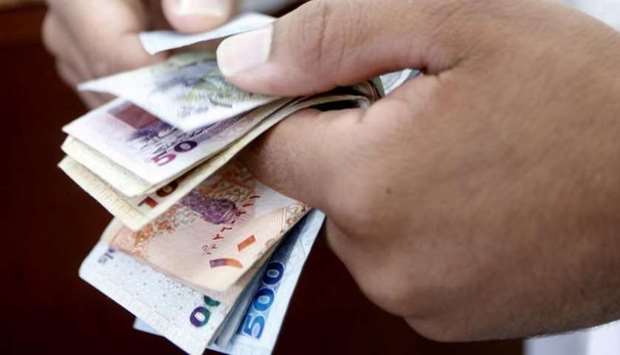Qatar’s new debt issuance totalled $15.7bn in the first three quarters of this year; a study by NBK (National Bank of Kuwait) Research has shown.
GCC issuance remains strong on higher financing needs and on track to exceed $100bn in 2020, NBK Economic Research said in its latest update.
In the first quarter of this year, Qatar’s new issuance accounted for $3.1bn, NBK Economic Research said. The second quarter had seen a significant jump – to $11bn, while the third quarter registered Qatar issuance worth $1.6bn.
According to NBK Economic Research regional issuance has been strong so far this year, on track to exceed $100bn for the full year (2020), driven by a high need for financing amid mounting fiscal pressures due to lower oil prices and the pandemic induced economic slowdown, encouraged also by a relatively low cost of financing.
About $35bn in dollar and domestic currency bonds and sukuk was issued in Q3, 2020, bringing YTD issuance to $98bn and pushing the total outstanding debt in the GCC to a record $579bn. “Looking forward, we expect GCC issuance to remain strong as oil prices are likely to remain below the breakeven prices and economic activity will take time to fully recover, while public spending is unlikely to decrease materially. In Kuwait, the possible passing of a debt law to finance a large deficit would also pave the way for the restart of issuance in the coming period,” NBK Research noted.
GCC medium-term sovereign bond yields mostly continued to trend downwards in Q3, 2020, it said. This follows a spike in yields in the earlier months of the pandemic (April/May), reflective of the higher perceived risk of GCC sovereigns, “pressured by the twin shocks” of the pandemic and historically low oil prices.
The declines were helped by an improving economic scene after the lifting of restrictions and the partial recovery of oil prices, thus lending support to confidence and alleviating some pressure on weaker fiscal positions arising from lower oil prices and weak, lockdown-induced business activity.
Additionally, strong investor demand continues to apply downward pressure on yields, evident by the high and well-received regional debt offerings during Q3, 2020.
Looking forward, GCC yield movements will continue to be influenced by oil market stability, the pace of economic recovery and the degree to which the pandemic is controlled, NBK Economic Research said.
A sustained improvement in economic activity and a stable oil market will help to keep yields subdued. Further, the strong investor demand (given the relatively low yielding global alternatives) is expected to continue, which will likely keep yields low.
On the other hand, it said a “resurgent virus with the possibility of renewed lockdowns will impede” a potential economic recovery, adding pressure on fiscal positions and consequently leading to higher yields.
“In the likely event of oil prices remaining below GCC fiscal break-even prices, issuances will likely remain strong for some time for deficit financing, keeping supply high and pushing yields up,” NBK Economic Research said.
In the first quarter of this year, Qatar’s new issuance accounted for $3.1bn, NBK Economic Research said. The second quarter had seen a significant jump – to $11bn, while the third quarter registered Qatar issuance worth $1.6bn.
According to NBK Economic Research regional issuance has been strong so far this year, on track to exceed $100bn for the full year (2020), driven by a high need for financing amid mounting fiscal pressures due to lower oil prices and the pandemic induced economic slowdown, encouraged also by a relatively low cost of financing.
About $35bn in dollar and domestic currency bonds and sukuk was issued in Q3, 2020, bringing YTD issuance to $98bn and pushing the total outstanding debt in the GCC to a record $579bn. “Looking forward, we expect GCC issuance to remain strong as oil prices are likely to remain below the breakeven prices and economic activity will take time to fully recover, while public spending is unlikely to decrease materially. In Kuwait, the possible passing of a debt law to finance a large deficit would also pave the way for the restart of issuance in the coming period,” NBK Research noted.
GCC medium-term sovereign bond yields mostly continued to trend downwards in Q3, 2020, it said. This follows a spike in yields in the earlier months of the pandemic (April/May), reflective of the higher perceived risk of GCC sovereigns, “pressured by the twin shocks” of the pandemic and historically low oil prices.
The declines were helped by an improving economic scene after the lifting of restrictions and the partial recovery of oil prices, thus lending support to confidence and alleviating some pressure on weaker fiscal positions arising from lower oil prices and weak, lockdown-induced business activity.
Additionally, strong investor demand continues to apply downward pressure on yields, evident by the high and well-received regional debt offerings during Q3, 2020.
Looking forward, GCC yield movements will continue to be influenced by oil market stability, the pace of economic recovery and the degree to which the pandemic is controlled, NBK Economic Research said.
A sustained improvement in economic activity and a stable oil market will help to keep yields subdued. Further, the strong investor demand (given the relatively low yielding global alternatives) is expected to continue, which will likely keep yields low.
On the other hand, it said a “resurgent virus with the possibility of renewed lockdowns will impede” a potential economic recovery, adding pressure on fiscal positions and consequently leading to higher yields.
“In the likely event of oil prices remaining below GCC fiscal break-even prices, issuances will likely remain strong for some time for deficit financing, keeping supply high and pushing yields up,” NBK Economic Research said.


